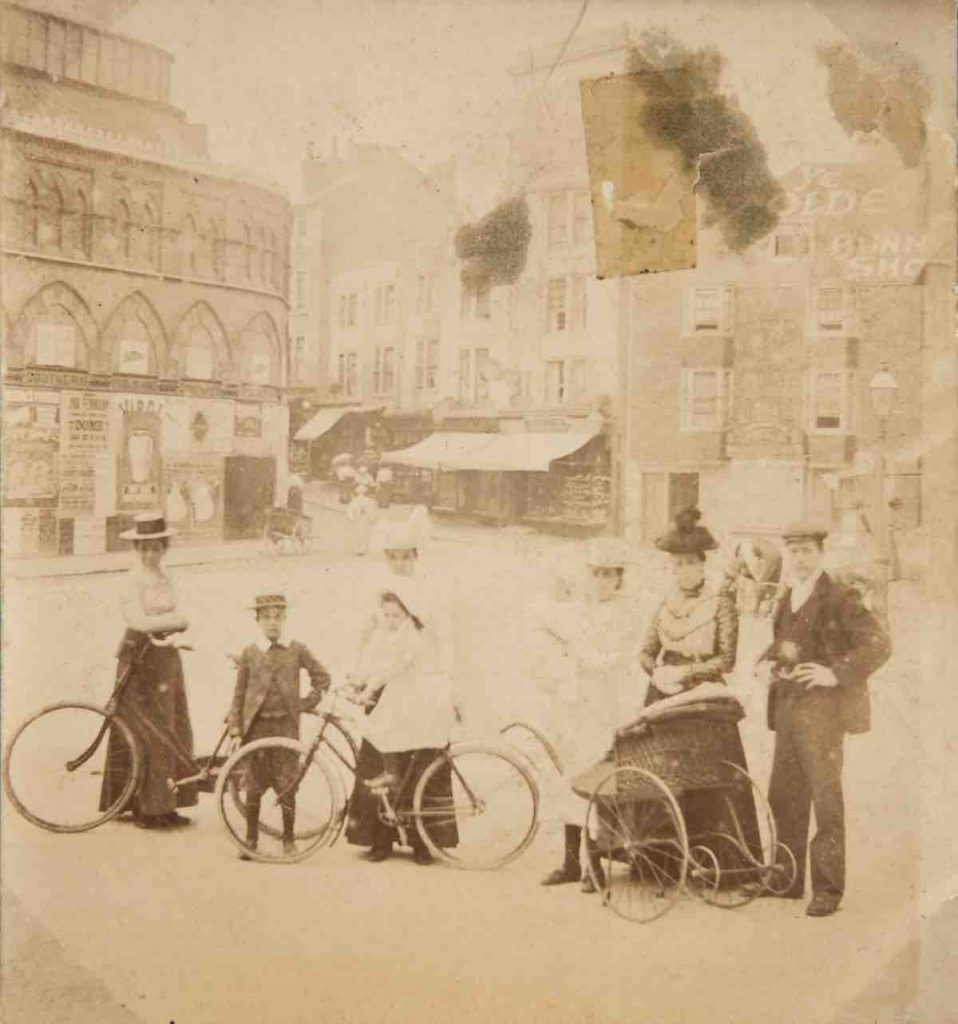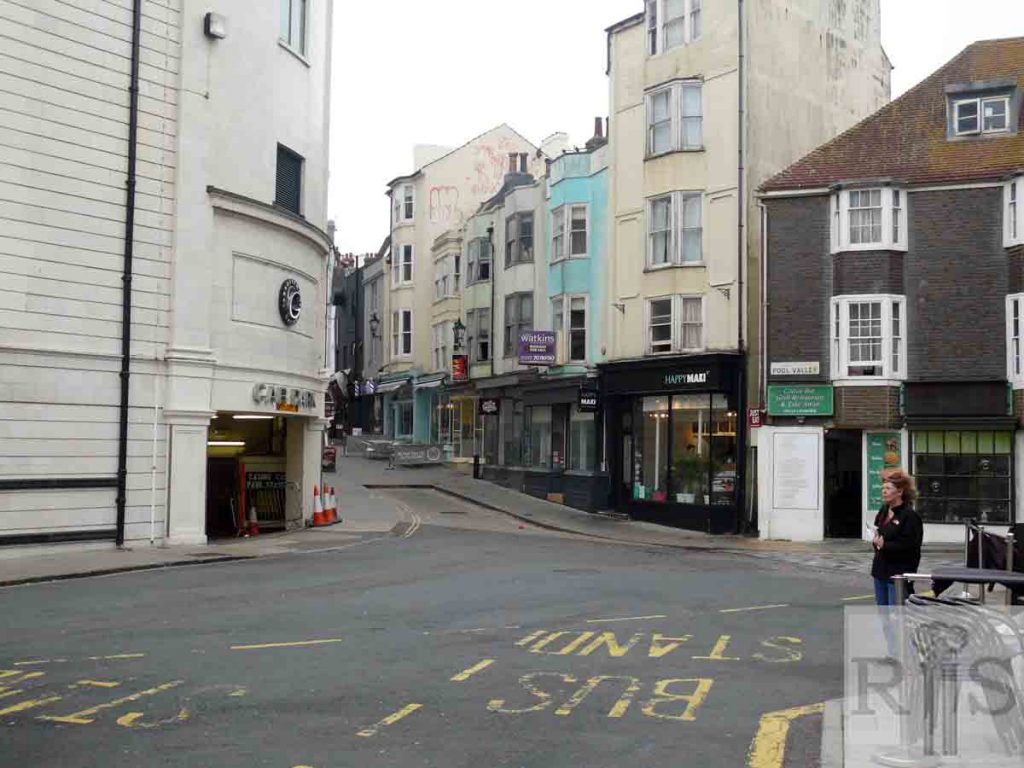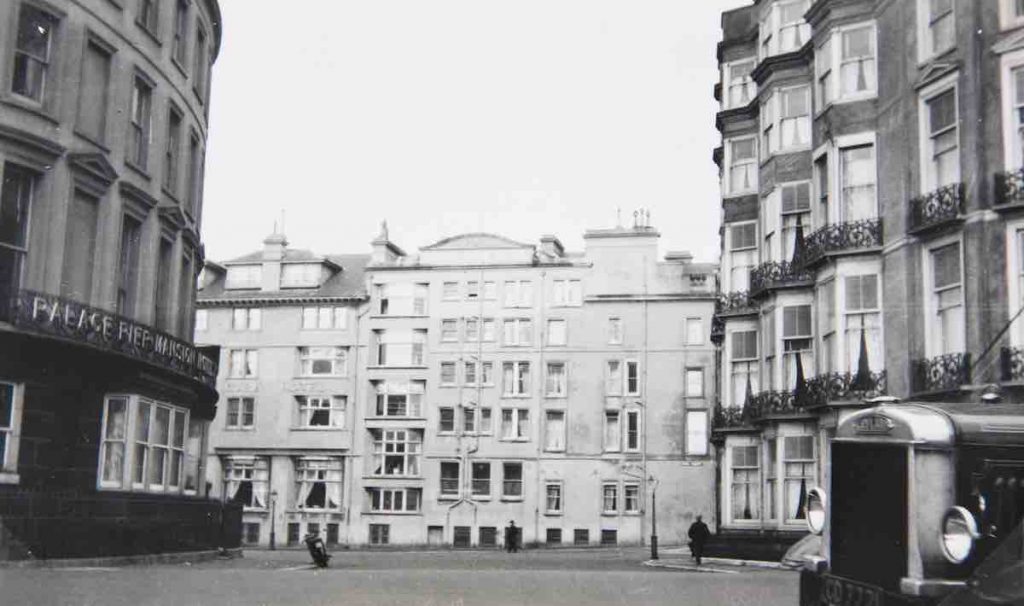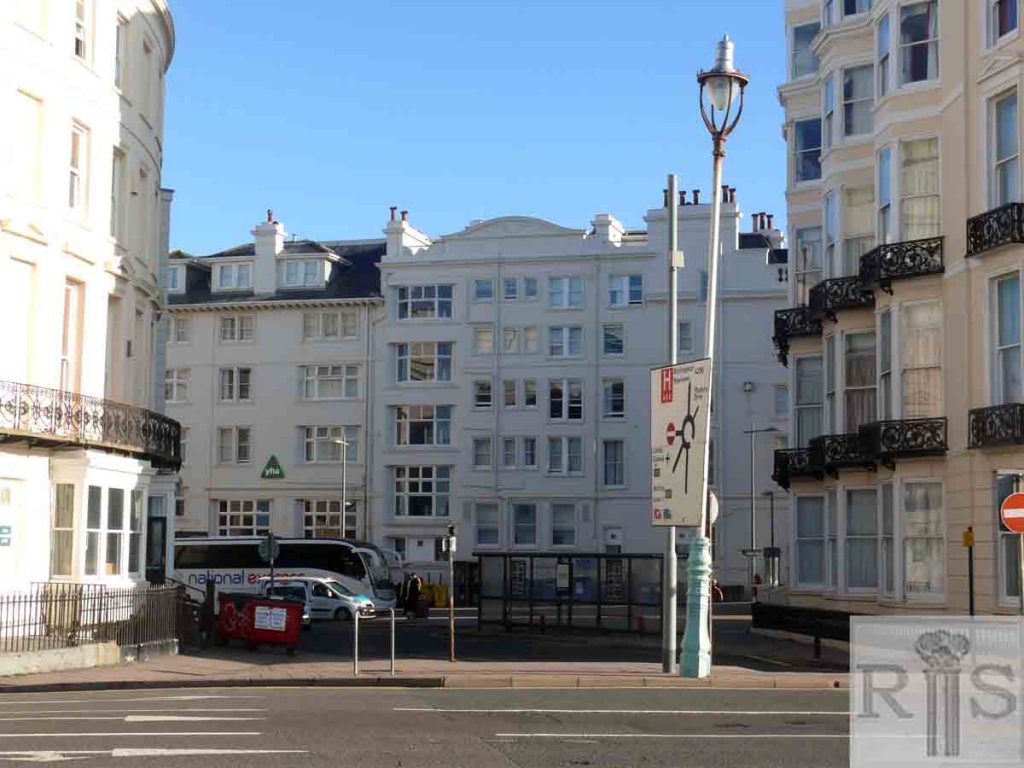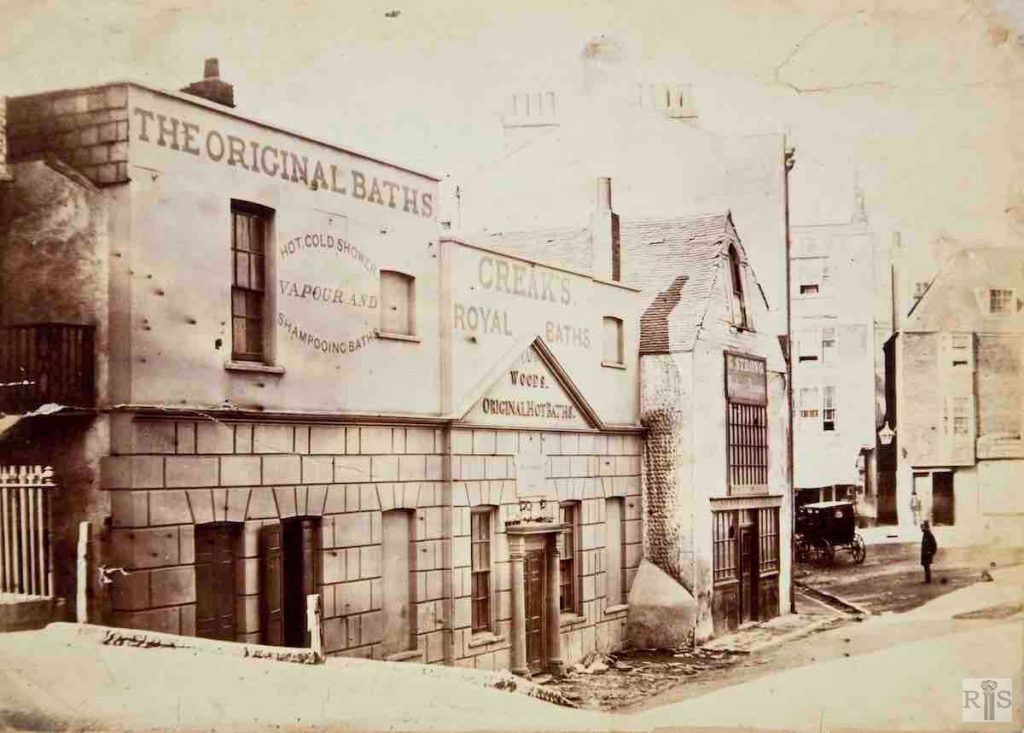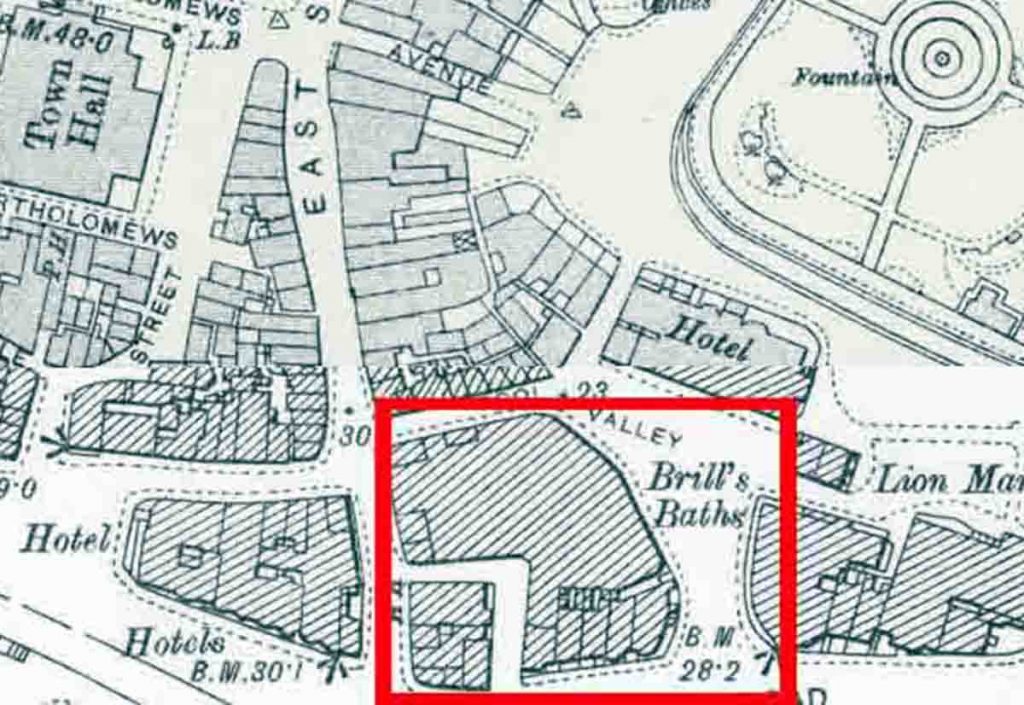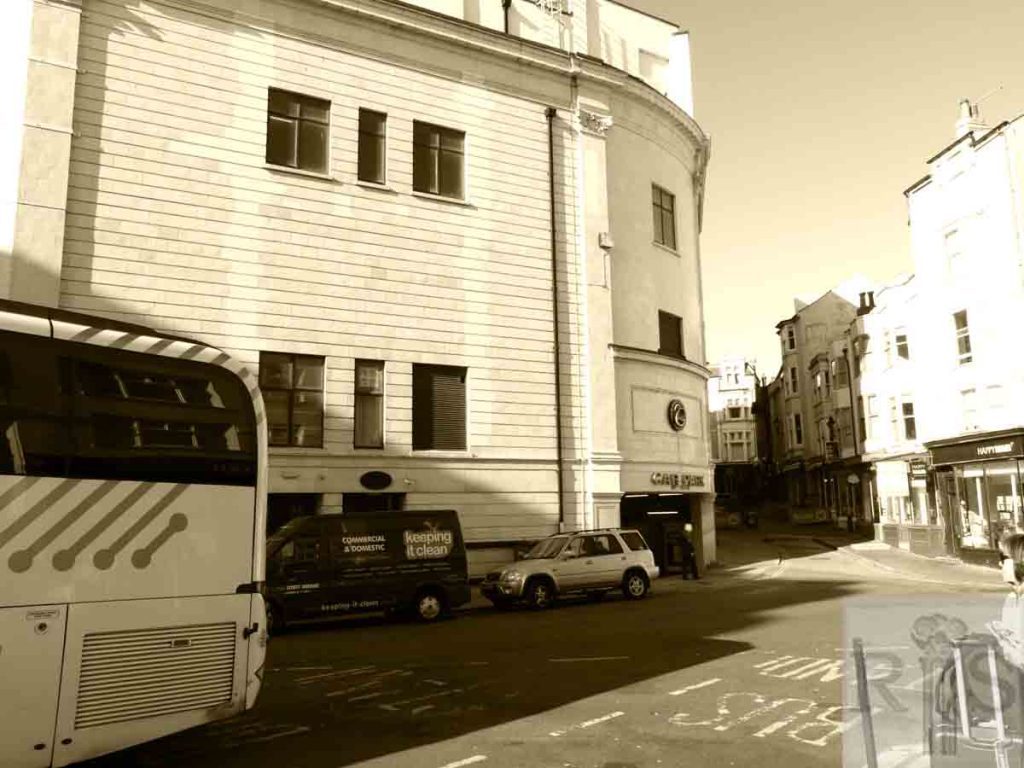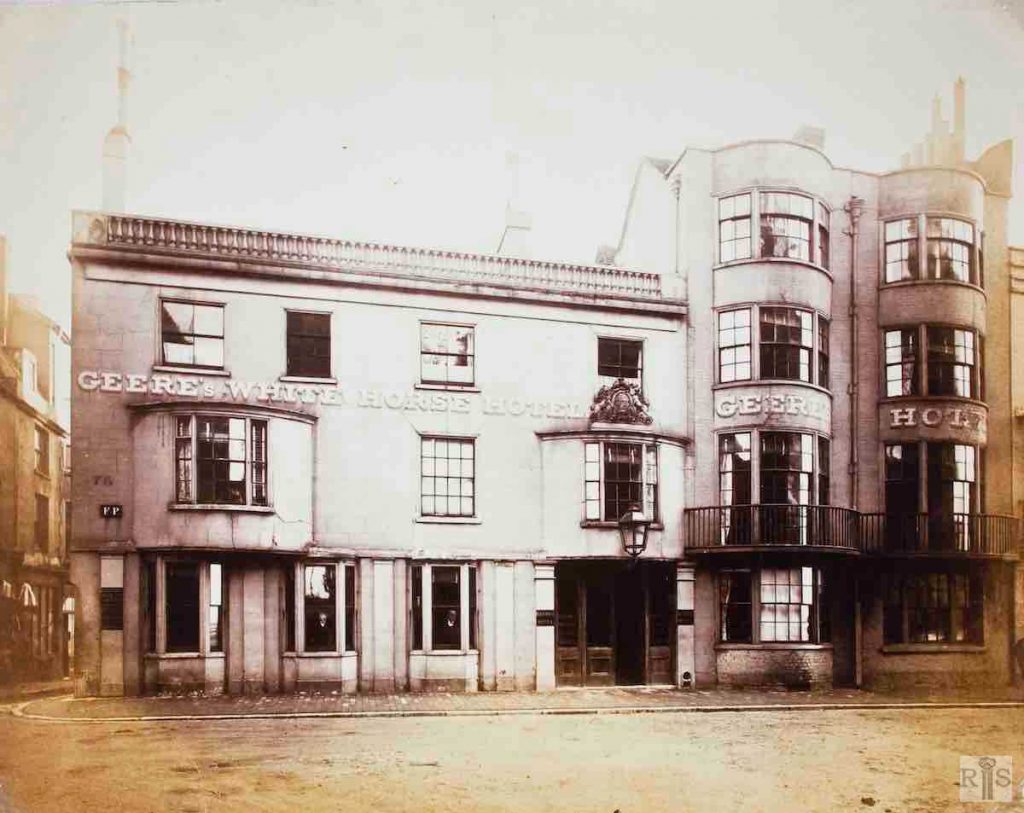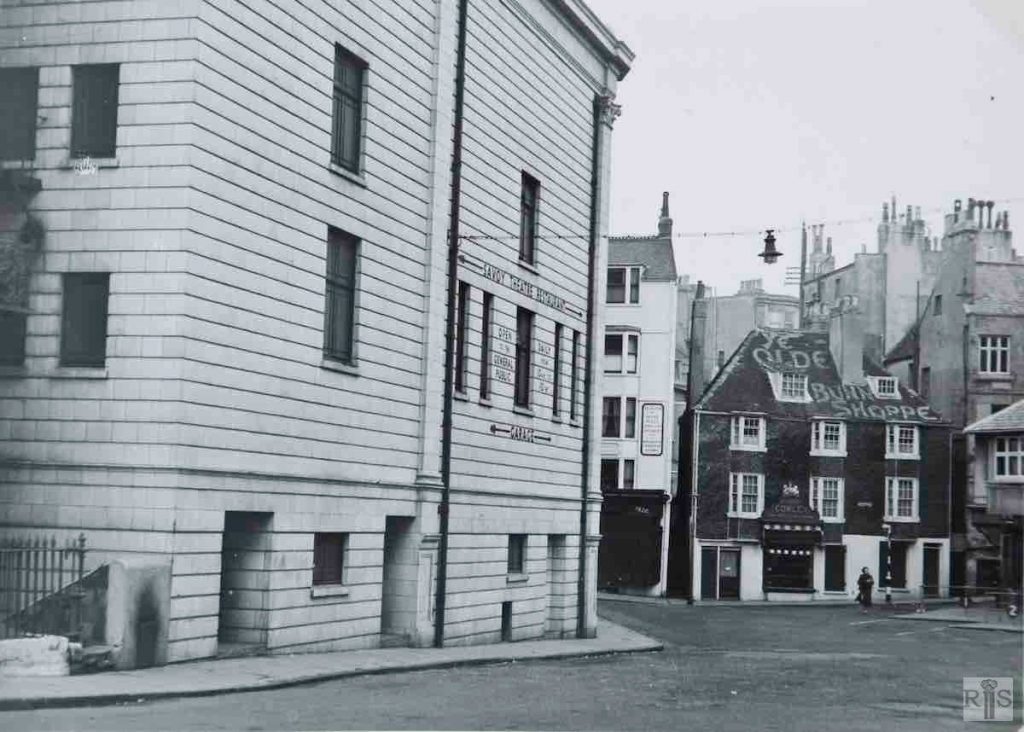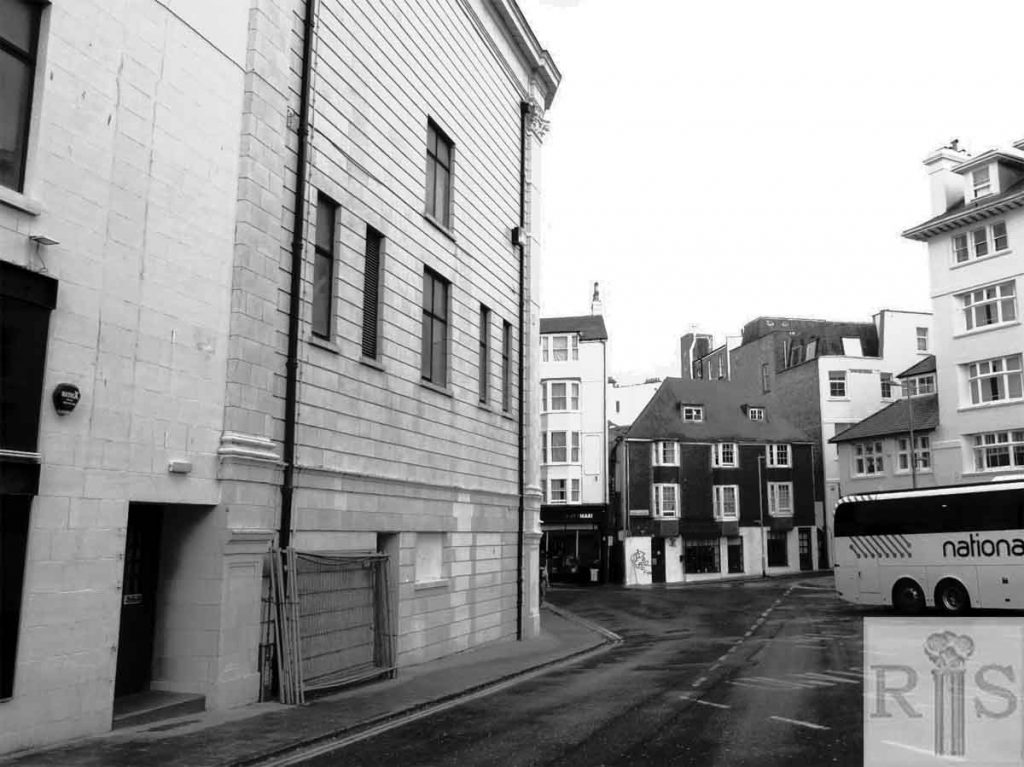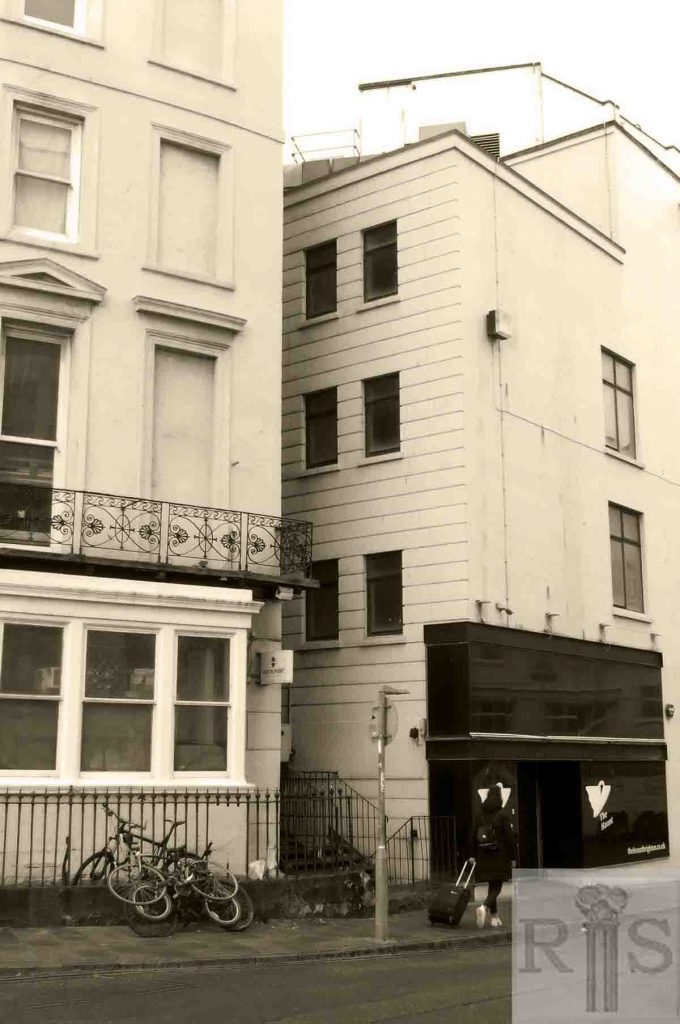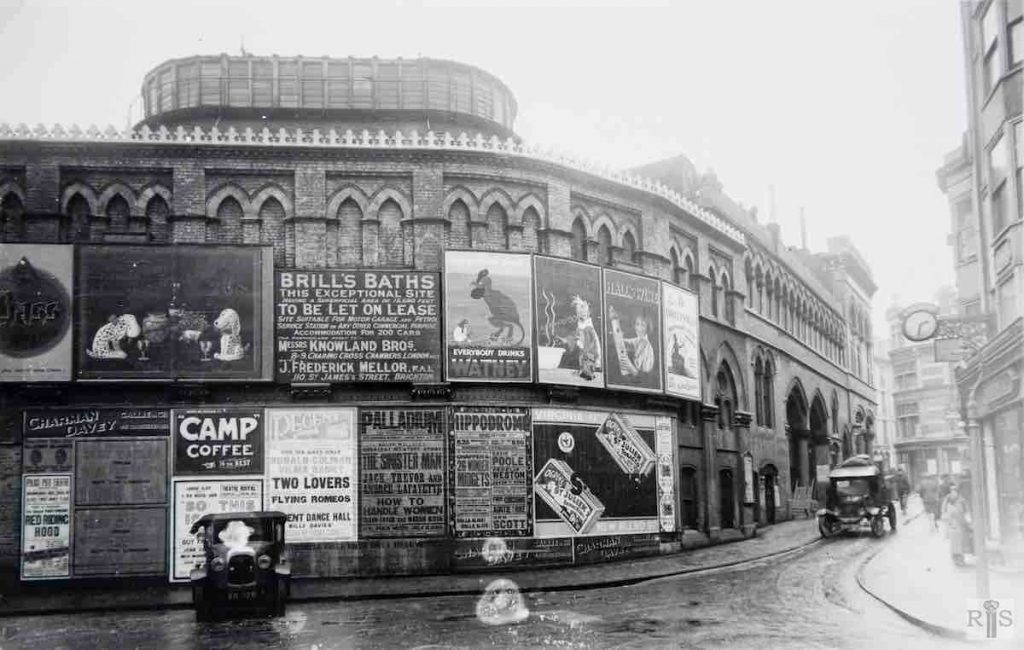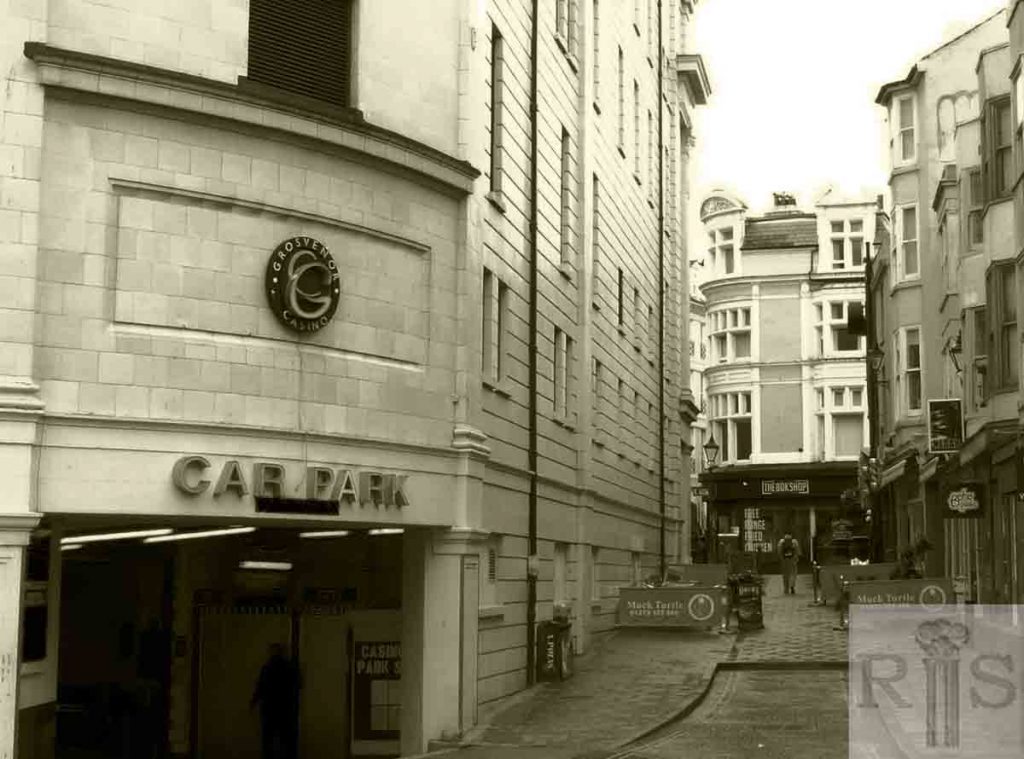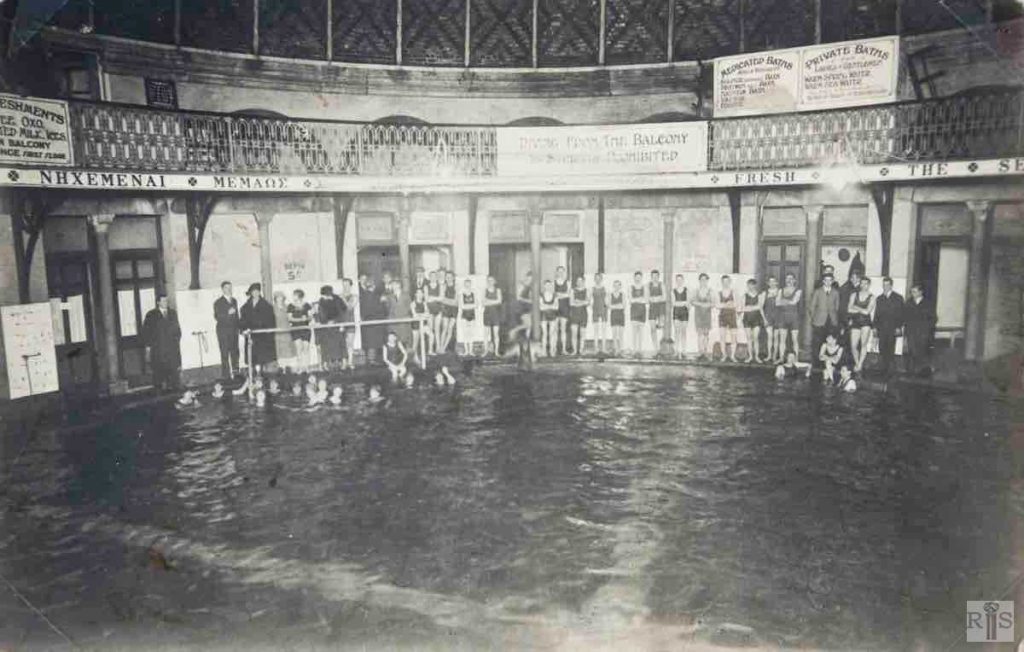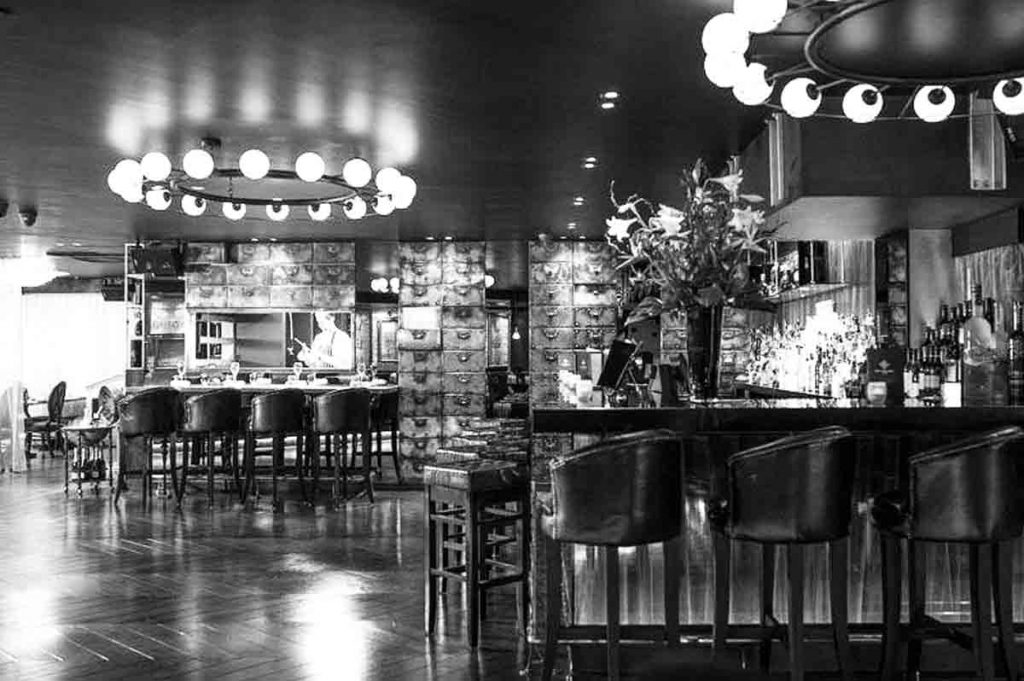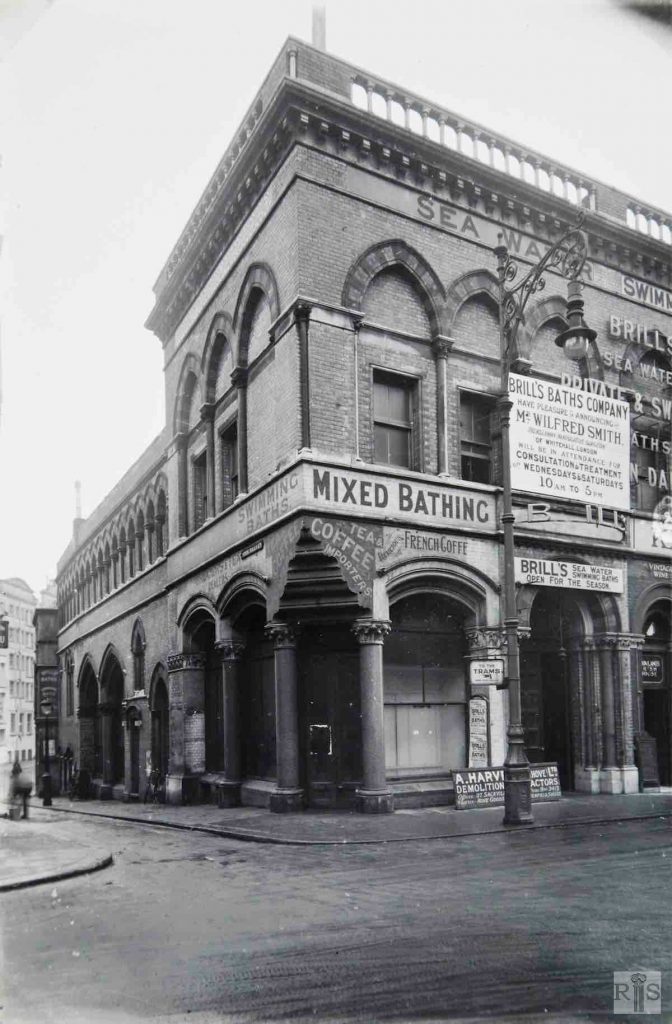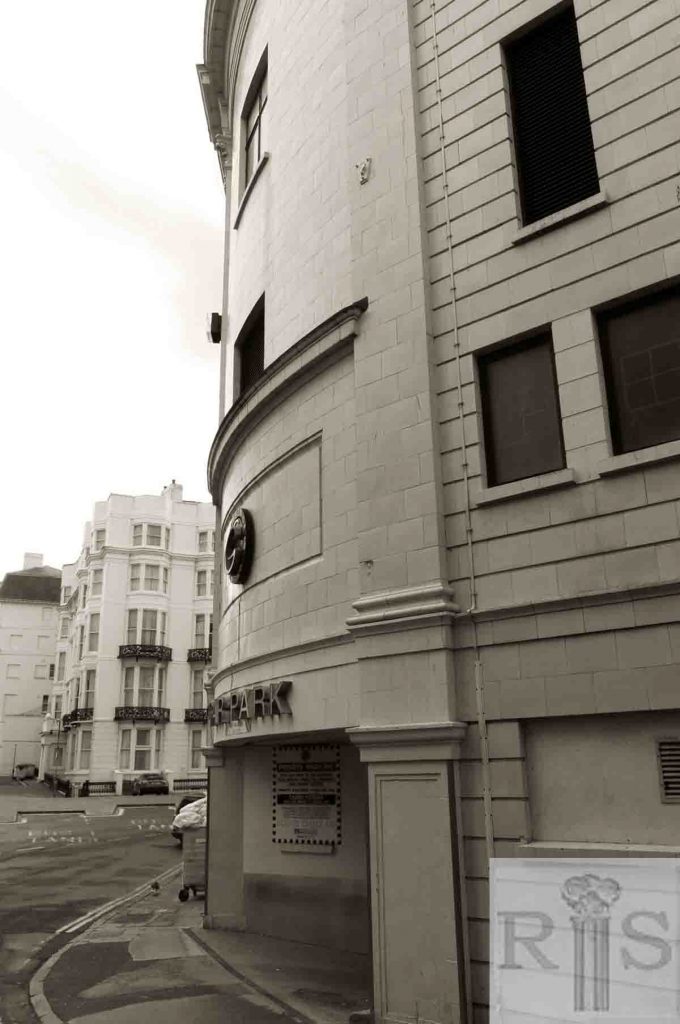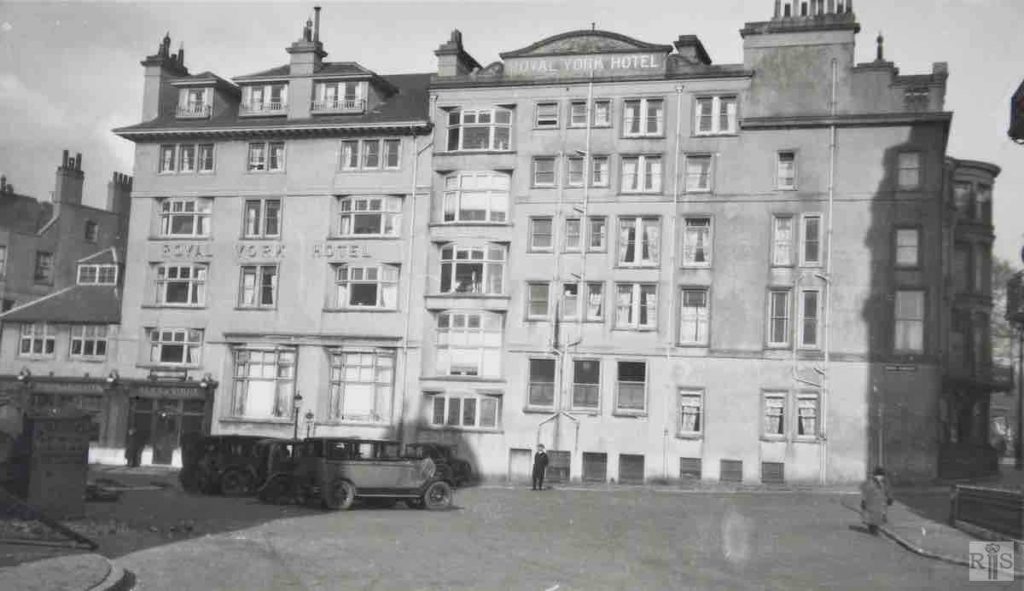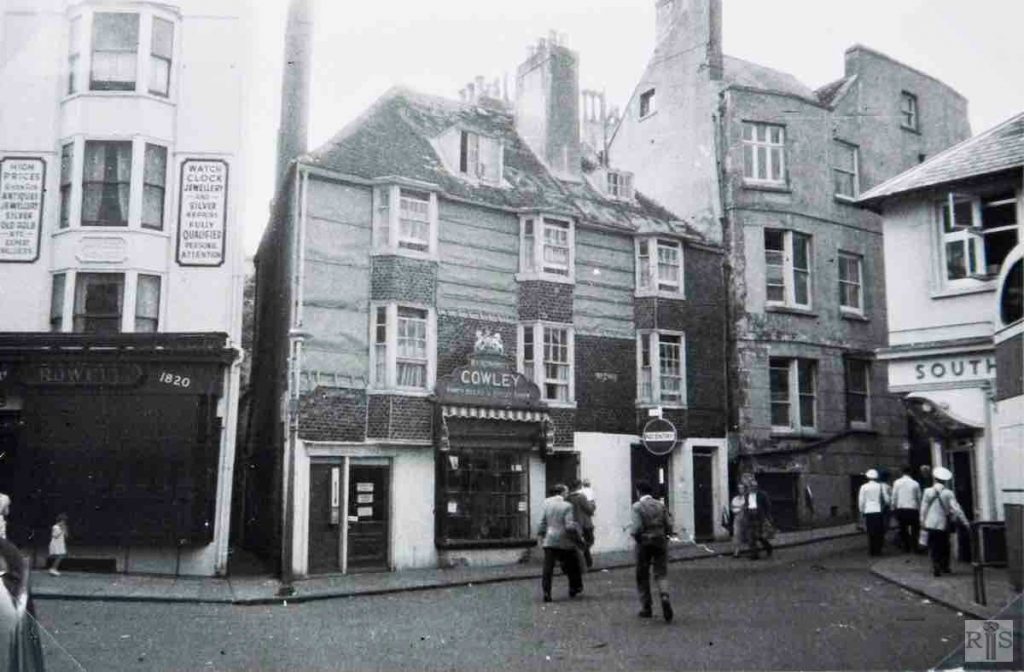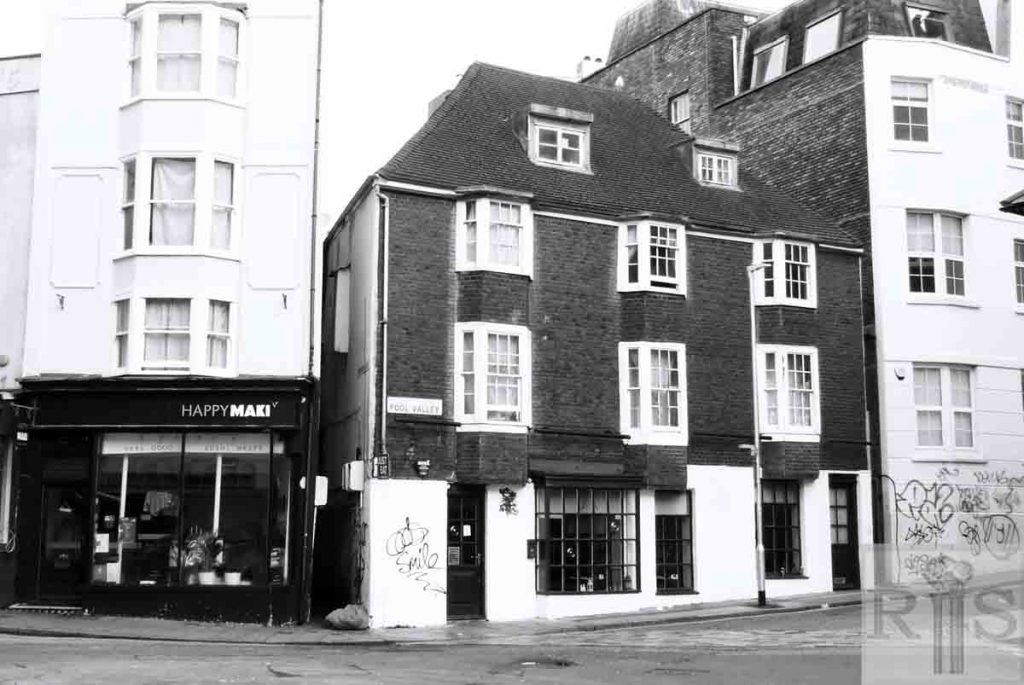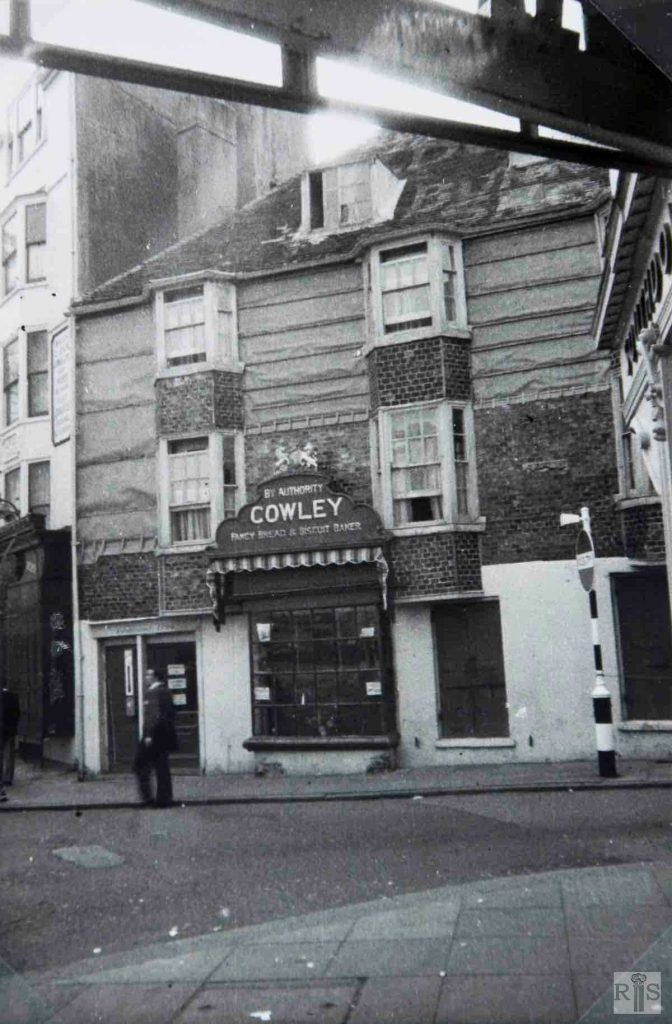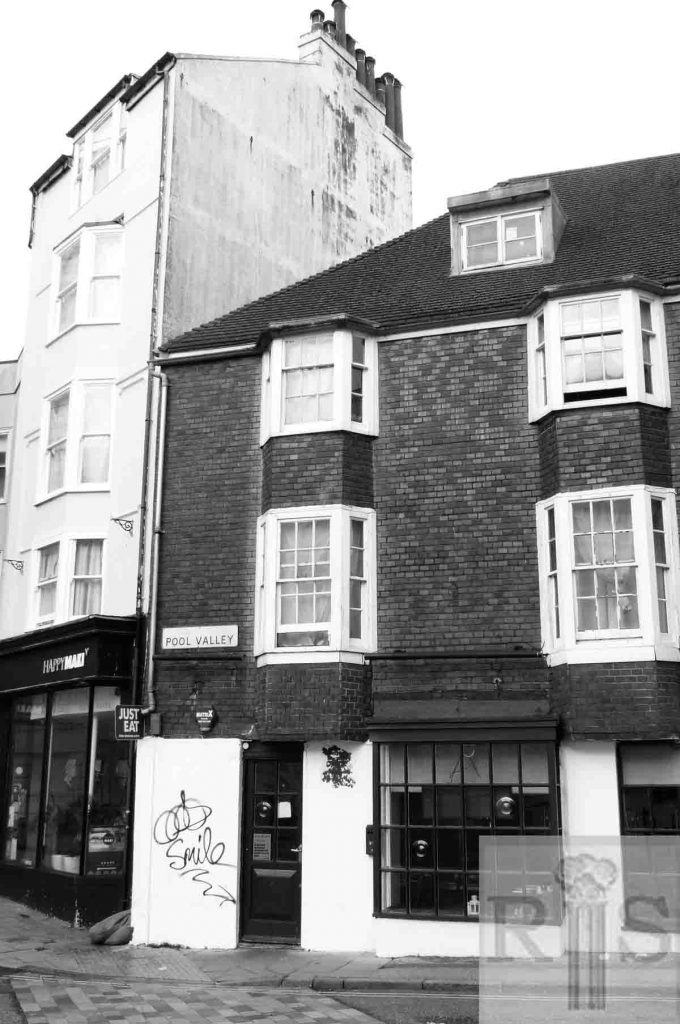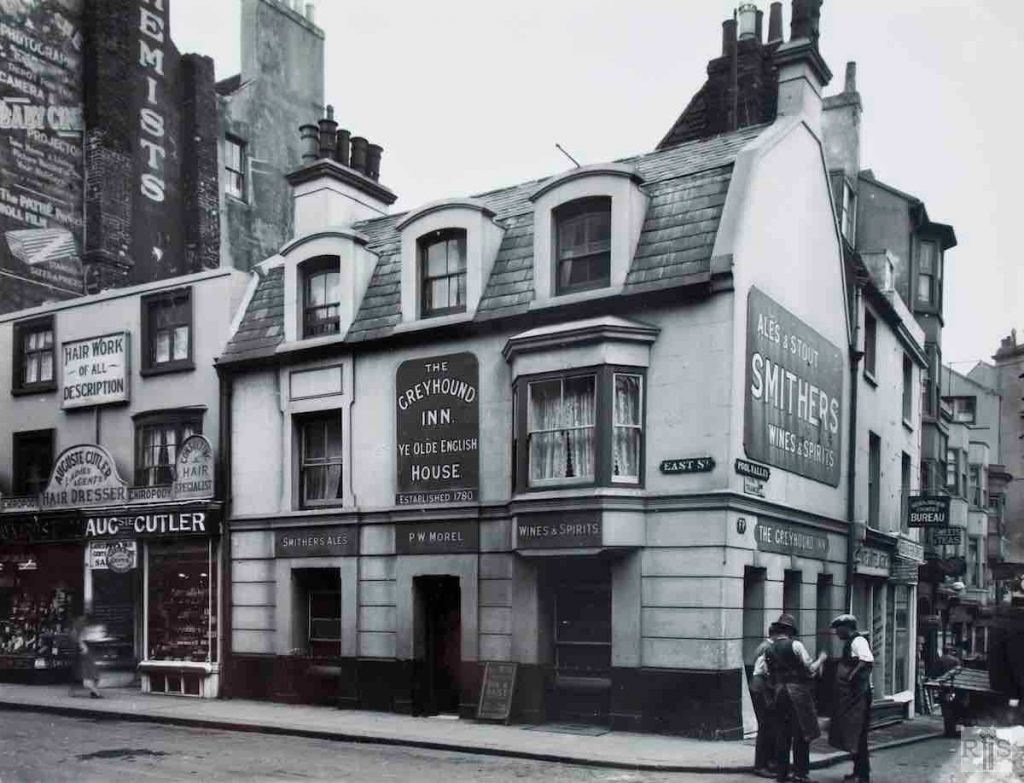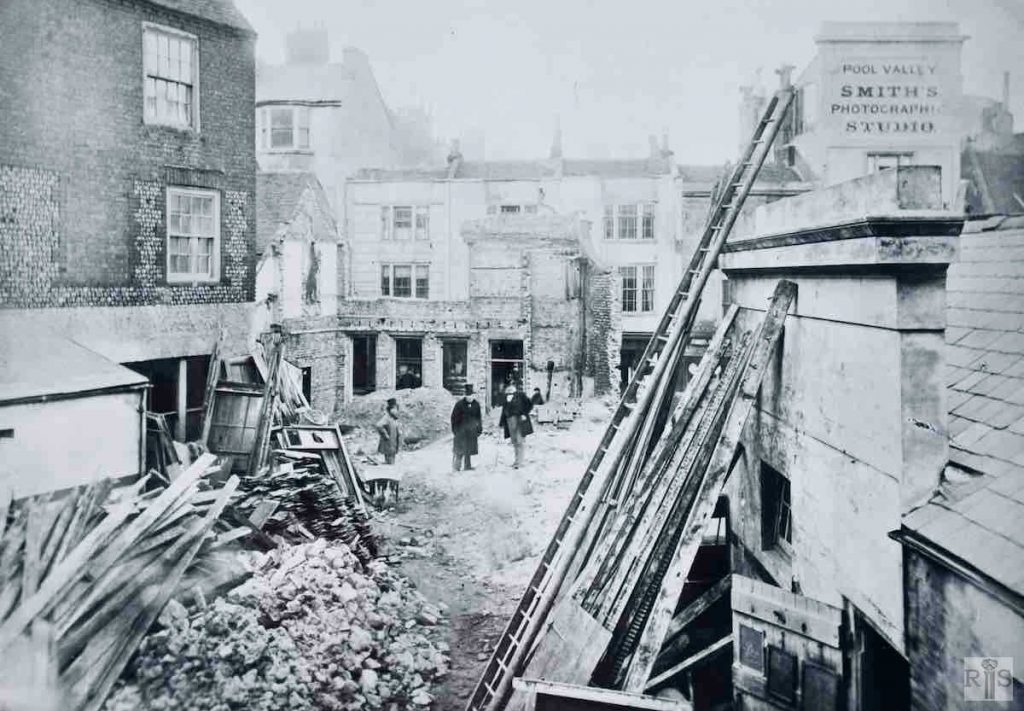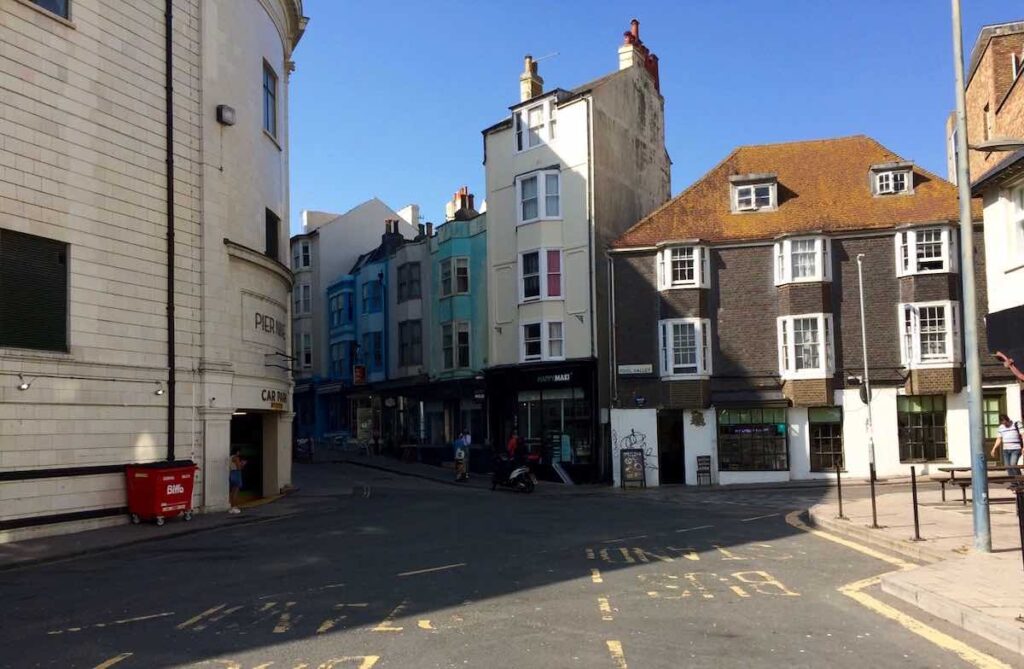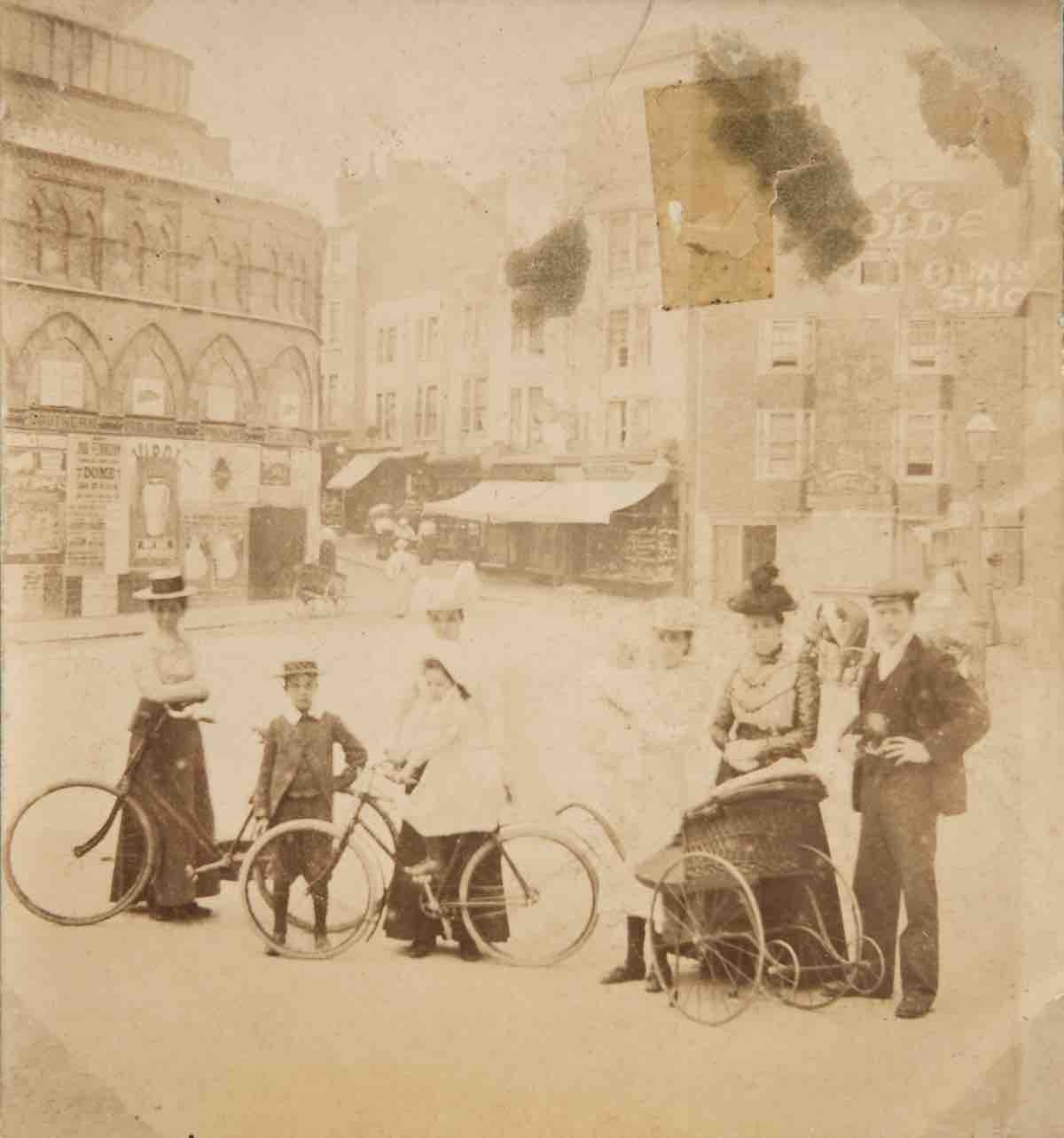
James Gray: Pool Valley in 1896, showing Cowley’s Bun Shop and the rear of Brills Baths. Note the unusual baby’s perambulator. jgc_10_019
2018: 122 years later, Pool Valley is now a coach station primarily serving National Express. On the left is the car park for Grosvenor Casino. In the centre is Happy Maki, a Japanese vegan restaurant. Cowley’s Bun Shop is now a coffee shop. (Photographer: Jane Jordan)
James Gray: The old baths shown above were originally built by Dr Awsiter in 1769 and then stood almost on the beach. In its early days Pool Valley was liable to flooding from the sea, but when Grand Junction Road was constructed in 1829 at a level several feet higher than beach level, it prevented further ingress by the sea.
James Gray: This old hotel was established in the 18th century, and stood on the corner of East Street and Pool Lane until 1869, when it was removed to make way for Brill’s Baths. Age of photograph unknown. jgc_09_084
2019: The White Horse was one of three pubs that were demolished to make way for Brill’s baths which were in their turn demolished to make way for the Art Deco Savoy cinema. The building still stands but is unoccupied. (Photographer: Ron Fitton)
James Gray: 100 years later [than jgc_09_067], with the Savoy cinema on the site of the old baths. This was built in 1929, replacing Brill’s Baths which had stood here for 60 years. When these Baths were built in 1869, after the earlier buildings had been swept away, the roadway was raised to its present level at the same time. It is interesting to note that the railings on the left appear unchanged and that Cowley’s Bun Shop has been at No 9 more than a century. jgc_09_068
James Gray: Two views [jgc_09_069 and 070] of Brill’s Baths in Pool Valley – January 1929. The placarded wall is on the site of the present entrance to the Savoy garage. Pool Valley was then a quiet backwater with no Southdown buses to disturb its serenity. The present bus station and offices were part of the Royal York Hotel, which had just been purchased by the Brighton Corporation from Sir Harry Preston. jgc_09_069
2019: See caption for jgc_09_068 above.
The gap between the Victorian building on Grand Junction Road, Hostelpoint, in 2019 and the 1930s Art Deco building still survives. (Photographer: Ron Fitton)
James Gray: Two views [jgc_09_069 and 070] of Brill’s Baths in Pool Valley – January 1929. Note the cinema advertisements of some of the last of the old silent films. Like the baths, they were soon to pass away, the first talking picture being shown at the Regent Cinema in July 1929. Additional Information: Ronald Coleman, Vilma Banky, The Sinister Man, How to handle Women, Regent, Palladium, Hippodrome. jgc_09_070
James Gray: Some fifty years later [than jgc_09_071], in about 1920. This photograph shows the interior of these famous circular sea-water baths. It is a pity this postcard view is rather indistinct and shows only part of the large area of the pool, but the size of the balcony gives an indication of its dimensions. The baths closed in late 1928, and demolition of the entire building commenced in January 1929. jgc_09_072
James Gray: Entrance to the Baths. Note that Pool Valley was free from traffic as at this period it was not used as the terminus for Southdown buses. On this site, originally, stood two public houses, The White Horse, a well-known posting house in the 18th century, and The Rising Sun. The latter, owing to its close proximity to the original Fish Market that was held on the beach below it, enjoyed the reputation of selling more beer than any other public house in the town. It was also the legendary home of Olde Strike-a-Lighte, a 17th century Brighton ghost. When the buildings were demolished in 1869, a part of the original Battery wall, some 4 feet thick, was uncovered. For sixty years, Brill’s Baths stood here and many will remember the circular bath of sea water and the ‘cold plunge’. In 1929 the site was again cleared and the Savoy Cinema was erected. This was opened in August 1930. This photograph and following [jgc_09_081 on the Brill’s Lane page] were taken in January 1929, shortly before the baths were demolished to make room for the Savoy Cinema. jgc_09_080
James Gray: Empty Pool Valley in January 1929, at the time of the removal of Brill’s Baths in East Street. Note the contractor A Harvey’s hut at the left. Royal York Hotel was sold to Brighton Corporation later in this year. jgc_09_100
James Gray: This shows the Pool Valley façade in 1929, when Brill’s Baths had just been demolished. In that year the hotel was acquired by Brighton Corporation for use as offices and the Southdown Bus Terminus was established in Pool Valley. jgc_09_130
James Gray: Two photographs of the famous Cowley’s Bun Shop and Bakery in Pool Valley. Built in 1794, it was occupied by the Cowley family for about a century and a half. In its heyday biscuits made here were sent to all parts of the world. Seen here, on the unknown date, it was empty and rather forlorn, bereft of much of the mathematical black tiles that were such a feature of the building. jgc_09_101
2019: No 9 Pool Valley as the site is more accurately called, the building is one of the oldest surviving houses in Brighton and has been called ‘one of its most famous surviving early buildings’. It operated as a bakery for about 150 years until the 1950s and since then it has had various commercial uses and is currently a restaurant. See also jgc_09_103 below. (Photographer: Ron Fitton)
James Gray: This inn has stood on this corner of East Street and Pool Valley from 1780. Even before this date an earlier inn, known as The Anchor, had been on the site since the middle of the 17th Century. This inn was built in the style of many Brighton houses of the late 18th Century, though doubtless it had been refaced. The photograph was taken in 1929, shortly before the inn was completely rebuilt. Additional Information: Auguste Cutler, P W Morel. jgc_09_083
James Gray: A present-day copy of a remarkable photograph, taken in 1868 or 1869. It shows the demolition of very old buildings on the south side of Pool Valley for the purpose of clearing a large area of ground in readiness for the building of Brill’s Baths (1869-1929) affectionately remembered by many old Brightonians.
